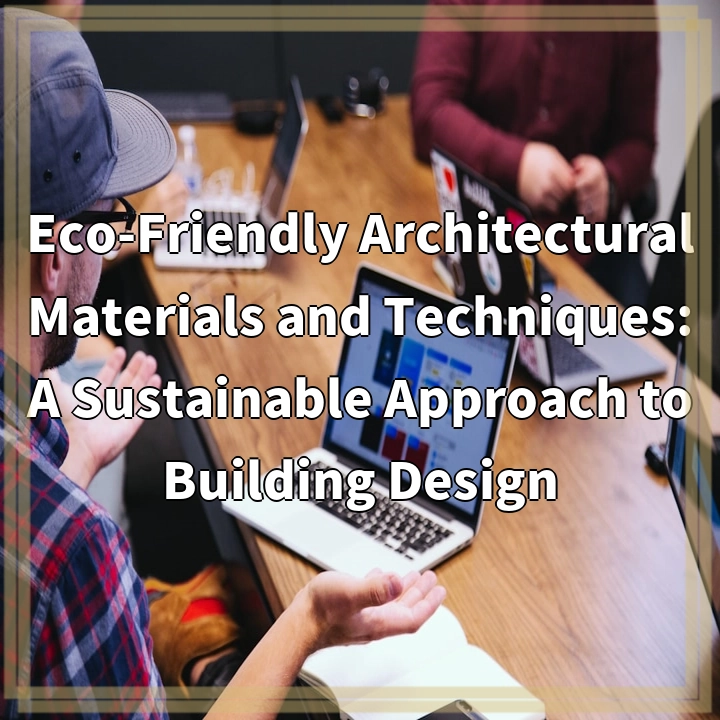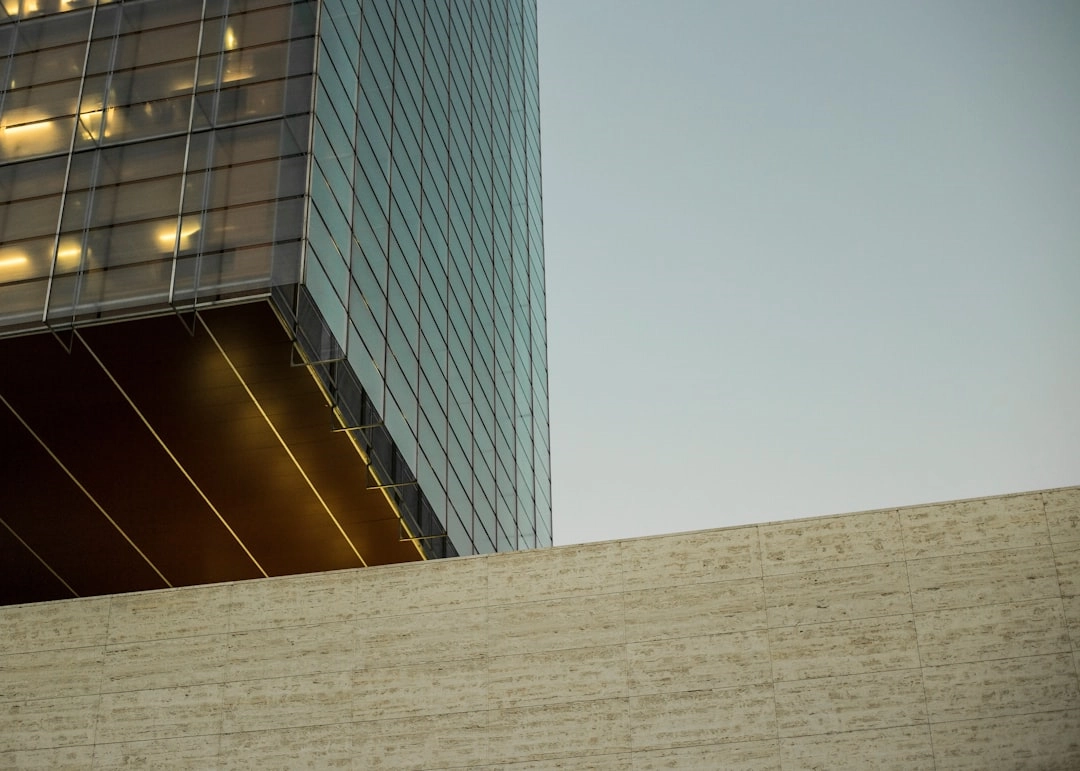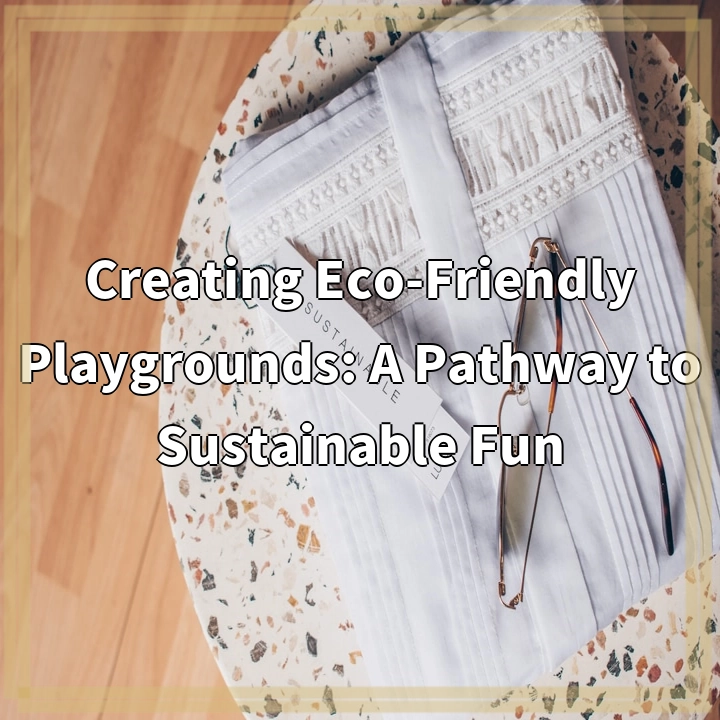
What it is:
Eco-Friendly Architectural Materials and Techniques: A Sustainable Approach to Building Design
Building design plays a significant role in environmental sustainability. The concept of eco-friendly architectural materials and techniques aims to minimize the negative impact of construction on the environment at every stage, from material selection to the building’s lifespan. By integrating sustainable practices, architects and designers can create buildings that are energy-efficient, resource-conscious, and environmentally friendly.
Real-world problems:
1. Pollution and Greenhouse Gas Emissions
The construction industry is one of the largest contributors to pollution and greenhouse gas emissions globally. Traditional building methods often involve the use of materials that are energy-intensive to produce, release harmful pollutants during manufacturing, or are not biodegradable. The excessive carbon footprint associated with conventional construction methods further exacerbates climate change and degrades air quality.
2. Resource Depletion
Conventional construction often relies heavily on non-renewable resources such as fossil fuels, metals, and virgin timber. The extraction and processing of these materials contribute to deforestation, habitat destruction, and soil erosion. As these resources become scarcer, it is crucial to explore alternative eco-friendly materials and techniques that are sustainable and reduce reliance on finite resources.
3. Waste Generation and Landfill Overflow
Construction and demolition waste account for a significant portion of the solid waste dumped in landfills. The disposal of construction debris, including concrete, bricks, and insulation materials, leads to environmental degradation and poses health risks. Adopting eco-friendly materials and techniques can help minimize waste generation and divert construction waste from landfills through recycling, reuse, and responsible disposal practices.
4. Energy Inefficiency
Traditional buildings often consume large amounts of energy for heating, cooling, and lighting. Poor insulation, inefficient HVAC systems, and inefficient use of natural daylight contribute to higher energy consumption and increased greenhouse gas emissions. Sustainable architectural materials and techniques focus on energy-efficient design, including the use of insulation materials, efficient building envelopes, and renewable energy sources, to reduce energy demand and promote a more sustainable energy consumption pattern.
5. Habitat Destruction and Biodiversity Loss
Construction activities often lead to habitat destruction and fragmentation, displacing wildlife and contributing to biodiversity loss. Urban sprawl and the destruction of natural landscapes also disrupt ecological balance. By adopting eco-friendly architectural materials and techniques, such as designing green roofs, incorporating biodiversity-friendly spaces, and using sustainable landscaping, it is possible to mitigate habitat destruction and encourage the coexistence of buildings and nature.
6. Health and Well-being
Conventional building materials may contain volatile organic compounds (VOCs) and other harmful substances that contribute to poor indoor air quality. This can lead to a range of health issues, including respiratory problems, allergies, and reduced productivity. Eco-friendly architectural materials prioritize the use of low-emission materials and natural ventilation, ensuring healthier indoor environments and improving the well-being of building occupants.

Solutions:
1. Embracing Sustainable Construction Materials
One solution to mitigate the environmental impact of building design is to shift towards using eco-friendly construction materials. This includes utilizing recycled and reclaimed materials, as well as exploring alternatives such as sustainable timber, bamboo, and composite materials. Using materials with lower embodied energy and environmental footprints can significantly reduce pollution and resource depletion.
2. Implementing Energy-Efficient Design Strategies
An important solution to address energy inefficiency in buildings is incorporating energy-efficient design strategies. This involves optimizing insulation, utilizing natural daylight, and employing efficient heating, ventilation, and air conditioning (HVAC) systems. Integrating renewable energy sources, such as solar panels or geothermal systems, can further reduce reliance on fossil fuels and decrease greenhouse gas emissions.
3. Adopting Waste Reduction and Recycling Practices
Minimizing waste generation and implementing effective waste management practices can significantly reduce the environmental impact of construction projects. Designing for deconstruction and using recyclable materials promote circular economy principles. Additionally, recycling construction and demolition waste, as well as reusing salvaged materials, helps divert waste from landfills and conserve resources.
4. Promoting Biodiversity and Ecosystem Services
Integrating green infrastructure within the building design, such as green roofs, vertical gardens, and permeable pavements, supports biodiversity and enhances ecosystem services. These measures can create habitat opportunities for wildlife, improve air quality, reduce stormwater runoff, and provide aesthetic and recreational benefits for building occupants and surrounding communities.
5. Prioritizing Indoor Environmental Quality
Ensuring healthy indoor environments is crucial for occupant well-being. Choosing low-VOC materials, implementing proper ventilation systems, and incorporating biophilic design elements that connect people with nature can improve indoor air quality and contribute to better physical and mental health. Prioritizing natural lighting, views to the outdoors, and acoustic comfort further enhance the overall indoor environmental quality.
By implementing these solutions, architects, designers, and construction professionals can embrace eco-friendly architectural materials and techniques to create sustainable buildings that minimize environmental impacts, promote energy efficiency, reduce waste, support biodiversity, and provide healthy and enjoyable spaces for occupants.















